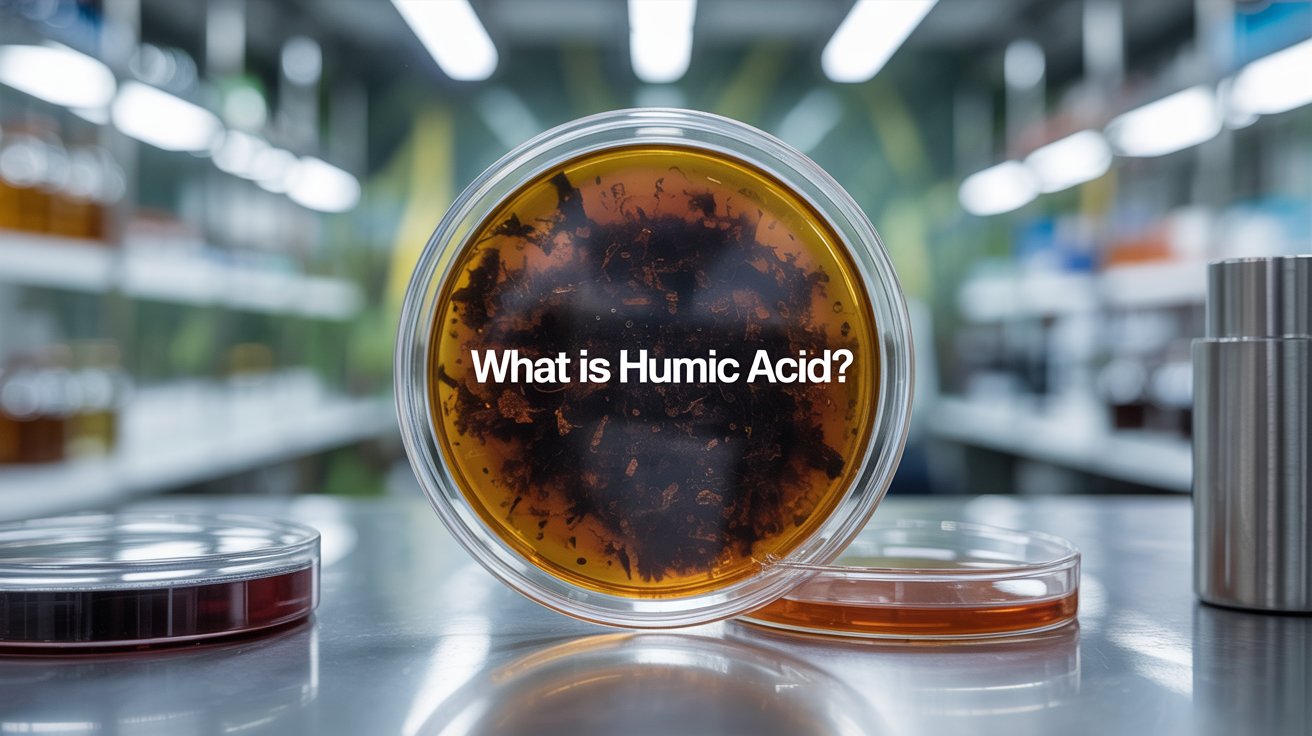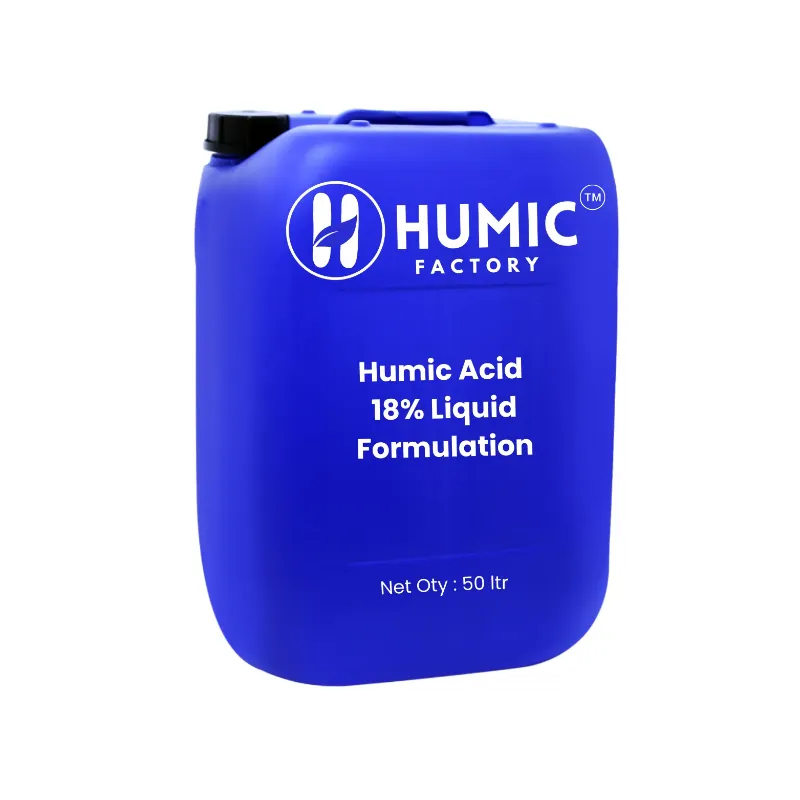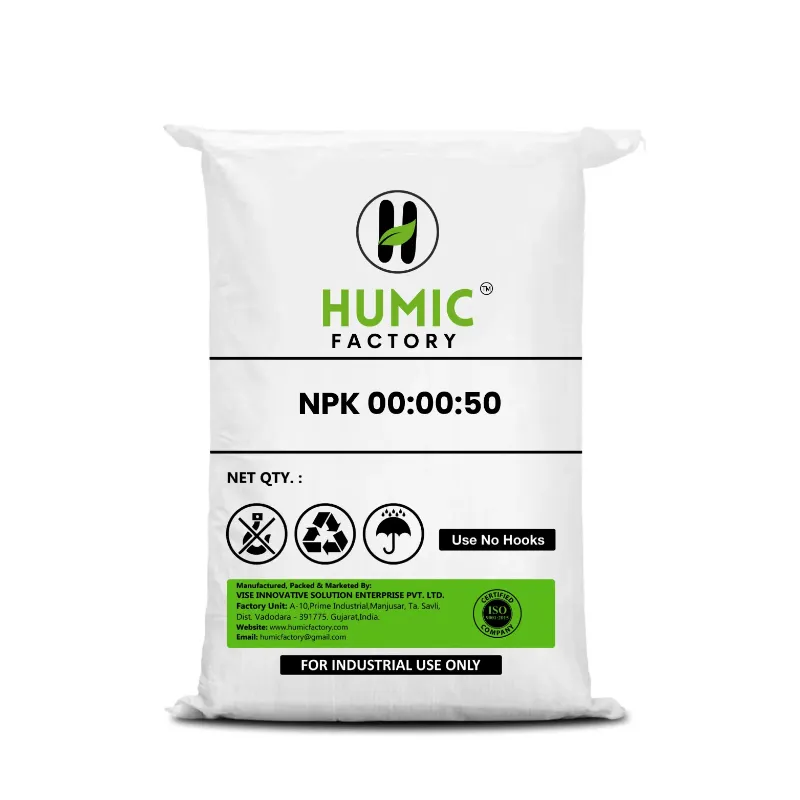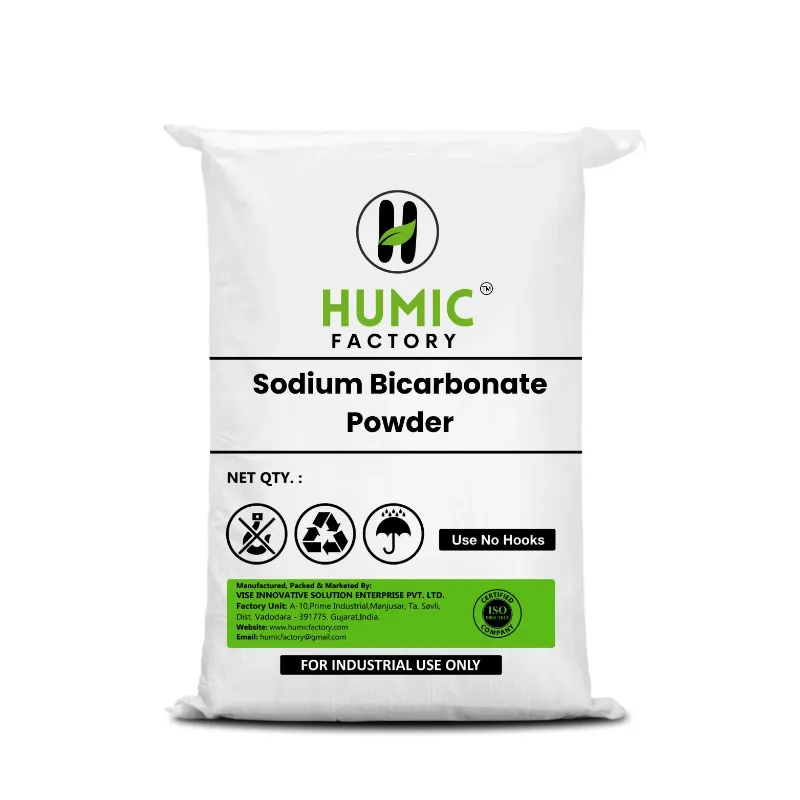Humic acid is a naturally occurring, organic product found in soil, compost, and other decomposed plant matter, that provides a powerful tool for enriching the earth, encouraging plant growth, and making soil healthy-humic acid is a farmer's best friend.
Humic acid, also known as a natural soil boost, has bioactive molecules that help plants uptake nutrients more efficiently. With high carbon and organic matter, Humic acid improves soil structure, increases water penetration, and facilitates root growth.
So, what is humic acid fertilizer? Humic acid fertilizer is a concentrated source of humic acid that provides a natural way to improve crop yield without synthetic chemicals. Humic acid fertilizer is used in a liquid or granular form and is an exceptional choice for sustainable and organic farming.
Still asking, humic acid - what is it and why should I care? To make things simple, it is the missing link between healthy soil and healthy plants. Whether it is improving microbial activity or unlocking nutrients that were stored in the soil, Humic acid means life to your soil.
Humic acid fertilizer is common in backyard gardens to typically 500-acre farms, which means it is a tiny step that can make a big difference in the bottom line of your growing season.
Humic Acid – What Is It and How Does It Work?
Humic acid represents one of the most effective organic materials found worldwide -- and it's found naturally. Humic acid is produced through the slow breakdown of plant and microbial matter -- what we call humus.
Humic acid acts as a link between soil and plants because it:
✅ Enables locked up nutrients in the soil.
✅ Increases the capacity of roots and plants when it comes to taking up water and minerals.
✅ Stimulates healthy microbes living in the soil.
To put it simply, what exactly is wedding humidity?
It is nature's way of feeding your soil and making your plants healthy.
Humic acid can be found in natural compost, peat, leonardite and fertilizers produced from humans. Whether you are growing vegetables in your home garden or managing acres in a farm, using humic acid on your soil is a huge benefit in every form of soil health and yield.
What Is Humic Acid Fertilizer?
- Humic acid fertilizer is an all-natural soil amendment created from decomposing plant and microbial materials.
- Humic acid promotes nutrient uptake, root growth, and enhanced soil structure.
Why does this matter?
Utilizing humic acid fertilizer is like giving your soil a natural energy drink — without chemicals!
Humic Substances in Soil: The Organic Backbone
- Humic substances include humic acid, fulvic acid, and humin — they are the organic materials formed naturally in soil over time.
- They are derived from millions of years of plant decomposition — nature's compost!
Composition Snapshot:
What Is Humic Acid?
- Still on your residual doubts, what is humic acid? It is the dark, nutrient-rich component of organic matter that binds together the particles of soil and feeds your crops.
Think of it like this:
humic acid = Soil conditioner + plant booster from nature
It does this by:
- Binding nutrients like nitrogen and phosphorus.
- Holding moisture in dry soil.
- Activating microbial life.
Humic Acid Definition and Natural Formation
Humic acid is a complex organic compound formed naturally when the plant and animal matter decays over long periods of time in the soil.
Humic acid is one of the primary components of humus, which is the dark, rich layer of healthy and fertile soils. Humus has a lot of carbon and other important minerals for plants to grow.
How does humic acid form?
- Dead plant materials degrade quite slowly.
- Microorganisms break it down a little more.
- Over the period of years (even centuries) it breaks down into humic substances.
There are natural places for this to happen - in forests and peat bogs, compost piles and pretty much any place where organic life returns to the earth.
Benefits of Humic Acid for Soil and Plant Health
it is a substance that sustains use as a natural booster for soil that changes your crops in a way that originates from the soil and goes upward. All of this applies to both farming and gardening. The advantages of humic acid are quantifiable in a more healthy soil, vigorous root growth and better-feed crops for harvesting.
Let’s break down specific beneficial aspects to either you as a grower and subsequently as one who prepares and consumes the produce, ranging from sustainable economics to environmental encapsulation in nutrients and growth levels.
How Humic Acid Fertilizer Improves Soil Structure
Humic acid fertilizer works like a sponge within the soil — improving texture, aeration, and moisture retention.
It helps bind loose soil global elements in sandy soils and break compaction in clay-heavy fields.
📌 Result: Air and water can more readily access roots and promote healthier plant growth.
Nutrient Retention and Enhanced Plant Uptake
So, what is humic acid? It is a naturally occurring chelating agent — meaning it can hold nutrients (like nitrogen, phosphorus, and potassium) in forms usable to plants.
It helps to limit nutrient leaching and it can help keep fertilizers from washing away during rain events.
📈 Ceiling Impact: Your plants can use more of each drop of input — so less nutrient waste.
Boosting Microbial Activity in the Soil
Humic acid itself acts like feed for the beneficial microbes in the soil.
Then these microbes break down organic matter and release more nutrients for your crops.
🦠 Think of it as: creating a living, breathing ecosystem below your crop.
Supporting Root Growth and Drought Tolerance
Humic acid application to soils allows for a more porous and better retaining soil, allowing roots to develop deeper and become firmer in spring.
More roots = more ability for access to water and minerals in times of drought.
🌿 Added benefit: Plants can recover from stress (hot weather, drying out) more quickly.
Increasing Crop Yields Naturally
Soil health + healthy roots = more growth. It really is that simple.
Humic acid used in agriculture is proven to produce greater yields in vegetables, cereals, fruits, and even ornamental crops.
✅ Higher yield
✅ Better quality produce
✅ Less reliance on chemicals
Humic Acid in Agriculture: A Sustainable Fertilizer Choice
As farmers strive to grow more with less, humic acid is unsurprisingly the clear choice. While it may seem new, humic acid is nature's original soil enhancer. Humic acid (fertilizer) is gaining traction worldwide, simply because it works on all types of farms while maintaining the life and productivity of soil.
Let's dive into why humic acid is changing agriculture as we know it.
Why Farmers Are Switching to Humic Acid Fertilizers
- Farmers choosing humic acid fertilizers can improve their yields without utilizing more chemicals.
- The organic soil enhancers improve plant roots, soil structure, and water-holding capacity, which is increasingly important in areas with erratic rainfall.
- Farmers have reported that by improving nutrient uptake, they require less NPK input each season.
Compatible with Organic and Conventional Farming
Either you are certified organic, or you run a traditional operation, humic acid fertilizer is applicable.
It is a natural, non-toxic amendment that can be used alone or in combination with other fertilizers.
Works well with:
✔️ Organic compost
✔️ Chemical fertilizers (as an enhancer
✔️ Bio-fertilizers & Microbial inputs
Flexibility is important - this is why humic acid in agriculture fits all farms, no matter the size or farm system.
Replacing or Reducing Chemical Fertilizers
- One of the largest transitions being made in agriculture is simply eliminating or reducing synthetic inputs.
- Humic acid application allows for farmers to transition without sacrificing yield and quality.
- Humic acid binds with nutrients in the soil therefore keeping them available for longer, while reducing the issues with fertilizer runoff and leaching not to mention reducing the NPK needed.
Many farmers are now using humic acid to:
- Reduce NPK use by 25-40%
- Maintain harvest consistency
- Improve soil health long-term
Humic Acid vs. Fulvic Acid – Key Differences Explained
Humic acid and fulvic acid are both important parts of organic matter, but the two have different functions in terms of plant nutrition and soil health. A common question farmers have is: Which one should I use? Knowing how they work helps you select the best option for your crops.
Let’s look at the differences 👇
Humic Acid – What Is It Compared to Fulvic Acid?
Humic acid is a larger, heavier molecule derived from decayed plants (usually from leonardite or peat). Humic acid's main work is done in the root zone, related to soil structure, and, generally, plant health.
Fulvic acid is smaller and has an easier movement in water molecules. Because of fulvic acid's smaller and lighter molecular weight, it can more easily penetrate plant cells, which is why fulvic is more often used as a foliar application and quicker nutrition delivery.
Quick Comparison Table:
Humic acid: What is it? - A soil conditioner that works slowly.
- Fulvic acid?- A nutrient transport carrier that works fast.
Benefits of Each in Agricultural Practices
🟢 Humic Acid Benefits:
- Improves soil texture and soil structure.
- Enhances microbial life in the root zone.
- Improves retention of nutrients.
- Promotes soil fertility over time.
🟡 Fulvic Acid Benefits:
- Enhances nutrient uptake at the leaf and root levels.
- Increases the speed of transport of nutrients into the plant's cells.
- Improves the value of micronutrients and foliar sprays.
- All of them are great for healthy plants, but work differently.
🌱 Both contribute to healthier plants but in different ways.
Which One Should You Use for Best Results?
The best choice depends on your goal:
Tip for farmers:: Use humic acid in the soil and fulvic acid in foliar sprays as a wholesome nutrient plan.
Both have a role to play if you plan to farm sustainably and for high performance.
For sustainable, high-performing agriculture, both have a place in your program.
Natural Sources of Humic Acid
To understand how humic acid works, we need to understand where it comes from. Unlike synthetic fertilizers, humic acid comes from natural, organic sources, and was once alive, then decomposed over thousands, and in some cases millions, of years. Moreover, some of these rich sources of humic acid fertilizer are also sustainable! They contain nutrients that enhance soil rejuvenation and crop productivity.
Let’s take a look at the main sources 👇
Leonardite as the Most Common Source
- Leonardite is the richest commercial source of humic acid.
- It is a soft, brown, coal-like material formed from ancient plant matter compressed deep underground.
Why it’s used:
- High concentration of humic substances
- Easy extraction for processing
- Good source for making liquid or granular humic acid fertilizers
This form of humic acid fertilizer is used widely in modern agriculture because of its purity and biologically advantageous properties in soil.
Peat Moss, Compost, and Sedimentary Deposits
Not all humic acid comes from leonardite. As well as leonardite, other natural sources include:
- Peat moss - decomposed vegetable matter from marsh areas that are normally wet
- Compost - breaking down organic wastes by microorganisms
- Sedimentary deposits - plant-based materials buried in the earth from ancient times
These types of sources tend to be used for local or homemade uses for humic acid, involving organic gardens and sustainable farming.
Some soils that are compost-rich may even have naturally occurring humic acid in them (in which case, humic acid can be a covert partner for healthy soil biology).
How Humic Acid Is Extracted for Agricultural Use
Once the sources of humic acid have been identified, they are harvested and then extracted for agricultural uses by processes such as:
- Alkaline extraction - using potassium hydroxide or sodium hydroxide to treat leonardite
- Filtration and purification - separating the humic and fulvic fractions of material
- Drying and/or liquefying - packaging for sale as humic acid fertilizer
Upon completion of the above methods, farmers receive concentrated and effective humic acid for their use; derived from commercial use should be used as two forms for application - in liquid form for foliar or drip systems, and either dry powder or granules for direct application to soil.
How to Use Humic Acid Fertilizer Effectively
Using humic acid fertilizer correctly can have a significant impact on soil health and crop production. From applying it to a small backyard garden to using it in huge fields, knowing how to apply humic acid, how much to apply, and when to apply it will help you achieve the best effects without wasting any product.
Let's look at how to utilize humic acid correctly step by step 👇
1. Liquid Humic Acid:
- Best for use as a foliar spray and when used in drip irrigation.
- Best and fastest results are due to quick absorption and will see evidence of its impact in days.
- Method of use by sprayer and fertigation system will lead to good coverage
2. Granular Humic Acid:
- Can be placed using the seed drill into the soil or alongside the plant when planting.
- Best for granular use is as a humic acid soil amendment or spreading (i.e., overstaking) for field crops and orchards.
- Provides a slow rate of release and helps with soil structure in the long term.
3. Powdered Humic Acid:
- Can be mixed with water or compost to provide a specific ratio.
- Suitable for deep mixing in soils by tractor or lysimeters and is good for nursery beds.
- Tip: Utilize the acid form based on your soil, stage of crop, and mode of irrigation.
What Is the Right Dosage of Humic Acid?
Dosage depends on form, crop type, and application method. General guidelines:
✅ Always read the label and do a small trial before full-scale use.
Best Timing and Frequency for Application
For maximum effectiveness, it is recommended to apply humic acid at the key growth points of the crop:
- Pre-planting: This helps the seed germinate and prepares the roots for growth.
- Vegetative stage: Long vegetative growth helps rapid growth and nutrient uptake.
- Stress periods (heat/drought): Enhance resilience and recover more rapidly.
How often: apply every 15 - 30 days during intense active growth.
Humic Acid as a Soil Conditioner and Supplement
In addition to being a soil an additive to fertilizers, humic acid is a soil conditioner:
- Improves water holding capacity
- Decreases soil compaction
- Increases microbial life
- Buffers pH and helps increase nutrient availability
Just think of humic acid as a base investment for the health of your soil.
Myths and Misconceptions About Humic Acid
Even with its increasing acknowledgement in sustainable agriculture and gardening, humic acid is still shrouded in myth and half truths. Whether you've used humic acid fertilizer before, or you’re considering using it for an organic crop, it's important to sift through fact and fiction.
We will dispel the most popular myths below 👇
Is Humic Acid Just Another Fertilizer?
- ❌ Myth: "Humic acid is just another fertilizer."
- ✅ Reality: Unlike fertilizers in the typical application sense, humic acid, does not provide NPK (nitrogen, phosphorus potassium) usually provided by chemical fertilizers, but instead, acts as a soil conditioner and nutrient facilitator.
🔍 What is humic acid fertilizer in this case?
- It is an additive that:
- gives you access to nutrients already in the soil,
- can even improve fertilizer efficiency,
- increases microbial activity to improve soil structure.
🧠 Humic acid makes everything else you apply work better, naturally.
Can You Overuse Humic Acid?
- ❌ Myth: "It is organic, thus you won't be able to over apply humic acid."
- ✅ Reality: even organic products can contribute to imbalance if over-applied or misapplied.
📌 A few examples of over applying of humic acid are:
- The nutrient ratios, gotten from the lab, will be skewed.
- If it has been over-applied using a liquid formulation, expect the liquid to runoff.
- Spending additional money on humic acid only results in no additional product.
🧪 The number of humic acid has been adjusted to recommended dosages which take into consideration crop type and/or soil condition. If in doubt, apply the lower limit and scale-up until hitting the upper limit.
Clarifying Doubts for Organic Growers
- ❌ Myth: "Humic acid is not organically sanctioned."
- ✅ Reality: Humic acid is more than acceptable in organic agriculture.
It is:
- a bi-product of natural product materials such as leonardite and peat.
- Non-toxic, biodegradable and environmentally manageable.
- Often certified for use in approved organic systems globally.
To all those who may be wondering "Is humic acid something that organic farming can claim?" The answer is yes as long as your supplier is reliable and certified.
Selecting the Best Humic Acid Products for Your Needs
With so many choices available, it can be overwhelming to find a suitable humic acid fertilizer. From product quality to application type, to trusted online sources in India — it is critical to understand what qualifies a humic acid product to be valuable to your money and safe for your plants.
Here's how to make an educated selection 👇
What to Look for in a Quality Humic Acid Fertilizer
All humic acid fertilizers are not the same. An acceptable humic acid fertilizer would be:
✅ High dosages of humic and fulvic acid (check the label percentage for this)
✅ Produced from natural sources such as leonardite or peat
✅ Can be dissolved in water, especially if part of drip irrigation or foliar spray
✅ Free from harmful inputs or heavy metals
✅ Practically pH balanced, with an ideal range of between 5 and 9
🧪 Pro Tip: If you are buying in bulk, consider asking for a lab analysis or certification.
Liquid vs. Granular – Which Form Is Better?
It depends on your needs and setup:
🔍 Both are effective. Your choice depends on application method, timing, and farming goals.
Buying Humic Acid Fertilizer Online in India
When ordering online, search for:
🛒 Trusted sources:
- Specialized agri-input sites
- Verified sellers in marketplaces, like Amazon or Flipkart.
- Manufacturers or distributors directly.
📦 Key tips when buying humic acid online:
- Check the reviews and ratings of the product.
- Check for compliance with the FCO (Fertilizer Control Order).
- Check prices by liter or kilogram (not just the MRP).
- Check the product for clear application instructions and crop usage recommendations!
Role of Humic Acid in Sustainable Farming Practices
In a world where soils are rapidly becoming depleted and distressed by chemical dependence, humic acid is a natural alternative. Humic acid is both a soil conditioner and plant stimulant, and is part of what I consider to be an under-developed opportunity in building agricultural sustainability to last over the long-term.
Let’s take a deeper dive into how humic acid fertilizer contributes to environmental sustainable production systems 👇
Reducing Soil Degradation and Chemical Dependency
🌱 The Effects of Continuous Synthetic Fertilizers:
- Soil compaction
- Nutrient lock-up
- Decreased microbial diversity
✅ How Humic Acid Repair Damage:
- Breaking soil compaction
- Increasing nutrient availability for plants
- Engaging microbial activity naturally
Farmers can reduce synthetic inputs by 25-40% of their inputs if they increase nutrient efficiency. Meaning humic acid is cost-effective while being eco-friendly.
Regenerating Soil Health with Organic Inputs
🧪 What is humic acid?
An organic compound with carbon, hydrogen, oxygen, nitrogen and sulfur; everything soil needs to be alive.
How it supports regeneration:
- Increases humus levels
- Increases water-holding capacity of the soil
- Supports root growth and microbial relationships
🌿 When humic acid fertilizer is applied with compost or biofertilizers, this enhances its regenerative effects.
Promoting Long-Term Agricultural Productivity
Agriculture is not only for the one harvest, but also supporting successful seasons.
✔️Humic acid provides resilience within the soil
✔️Improves soil ability to withstand/ recover from drought or salinity, and nutrient loss
✔️Support deeper stronger roots and all crop cycles
Farmers who use humic acid in agriculture have seen:
- Increased yield
- Improved crop quality
- Less crop stress in extreme weather
FAQs
H3: What is humic acid and how is it made?
Humic acid is a naturally occurring organic compound, created by the decomposition of living things in the soils, often obtained from natural sources such as leonardite or peat.
H3: What is humic acid fertilizer and how is it used?
Humic acid fertilizer is not a fertilizer per se, but a soil conditioner, intended to help improve nutrient uptake and to improve plant development. It can be applied as a foliar spray, drenched into the soil, or used in conjunction with other fertilizers.
H3: Can humic acid be used on all types of crops?
Yes! Humic acid fertilizer is appropriate for vegetables, cereals, fruits, flowers and lawns, it helps with rooting and overall crop performance.
H3: How often should I apply humic acid fertilizer?
Apply humic acid fertilizer every 15-30 days during active crop growth. The timing may be affected by the soil conditions and the crop itself.
H3: Is humic acid safe for organic farming?
For sure. Humic acid is a natural input which can be used in organic farming systems or traditional agricultural systems; it is non-toxic and environmentally friendly.
Conclusion – Embrace Humic Acid for Healthier Soil and Better Harvests
After seeing all of the benefits, one thing is clear, is humic acid not just a supplement to your farm, it is a game-changer. It is the secret ingredient whether you are growing vegetables in your backyard or are working towards large-scale agriculture. Humic acid fertilizer allows your soil to breath, your crops to flourish, and your continued bountiful harvests naturally!
Why Every Farmer Should Consider Humic Acid Fertilizer
Modern agriculture requires smarter solutions.
Humic acid fertilizer gives growers a natural way to improve nutrient uptake, enhance root development, and reduce reliance on chemicals.
🌱 It's easy to use, affordable, and effective over 95% of crops.
📌 If you are striving for healthier crops and lower input costs, humic acid can help!
Long-Term Gains for Soil, Crops, and Environment
Humic acid fertilizer products improve soil health over a long period of time, versus temporary quick fixes.
✅ Soil benefits: improved structure, increased water retention capabilities, increased microbial life
✅ Crop benefits: better yields consistently over time, better crop resilience in seasons of stress
✅ Environment: less runoff, decreased chemical pollution, and improved soil fertility in the long-term
💡 What is the real power of humic acid? Sustainability and productivity over a long period of time.
Start Your Journey Toward Sustainable Farming Today
Using humic acid fertilizer in agriculture isn't a fad. It's just the first step towards better, more sustainable farming practices.
Start small, try it on a few rows, and see the way your plants, and soil, respond.
🌿 Humic acid works whether your crop is organically or conventionally produced.








